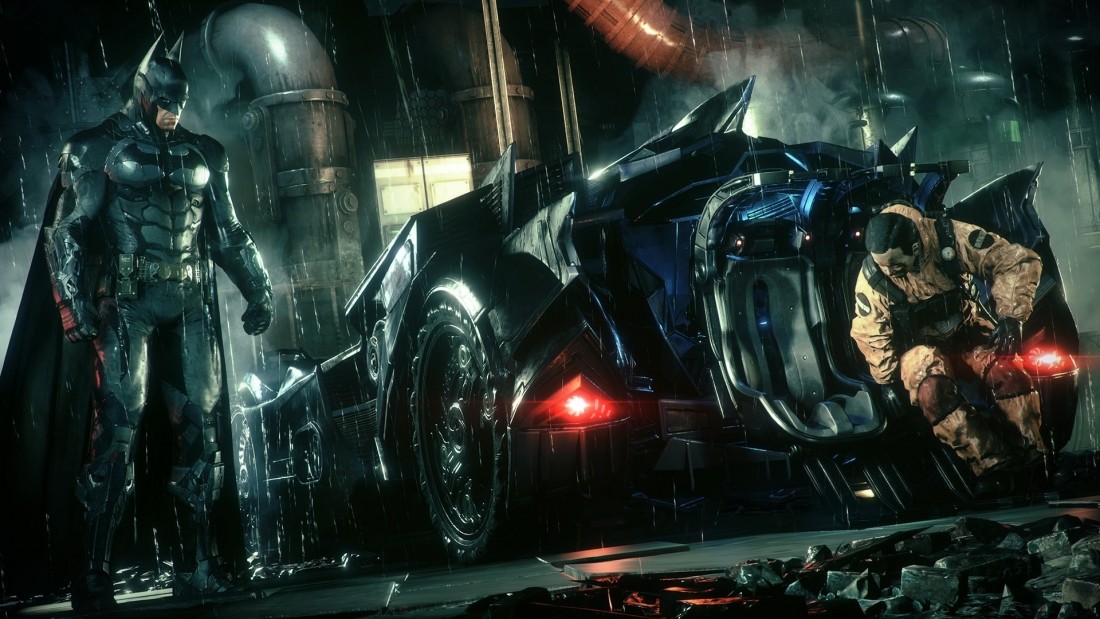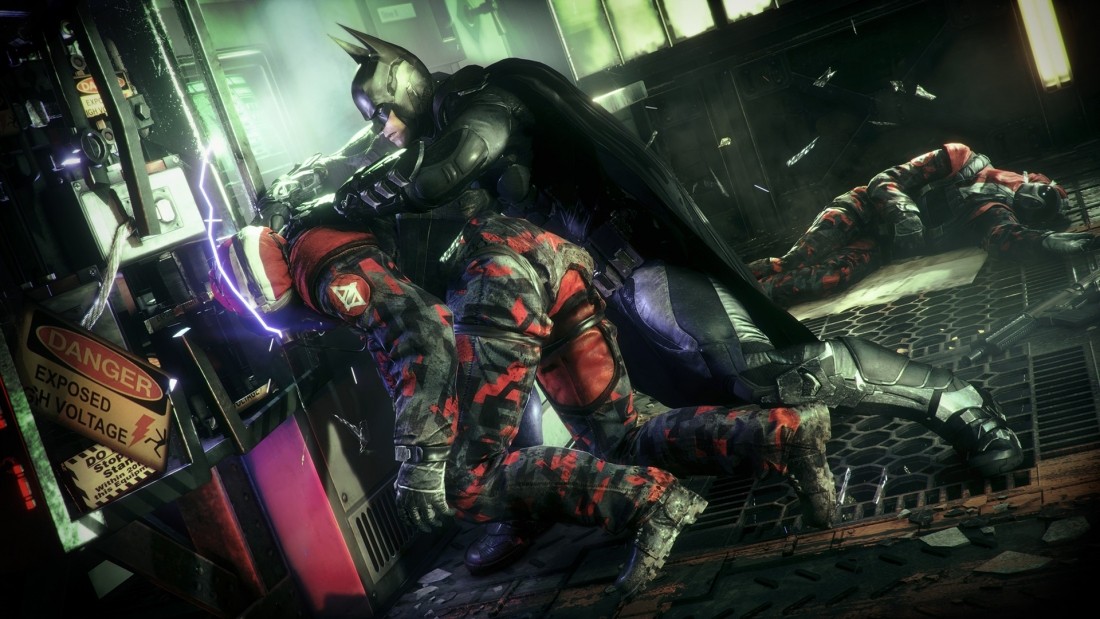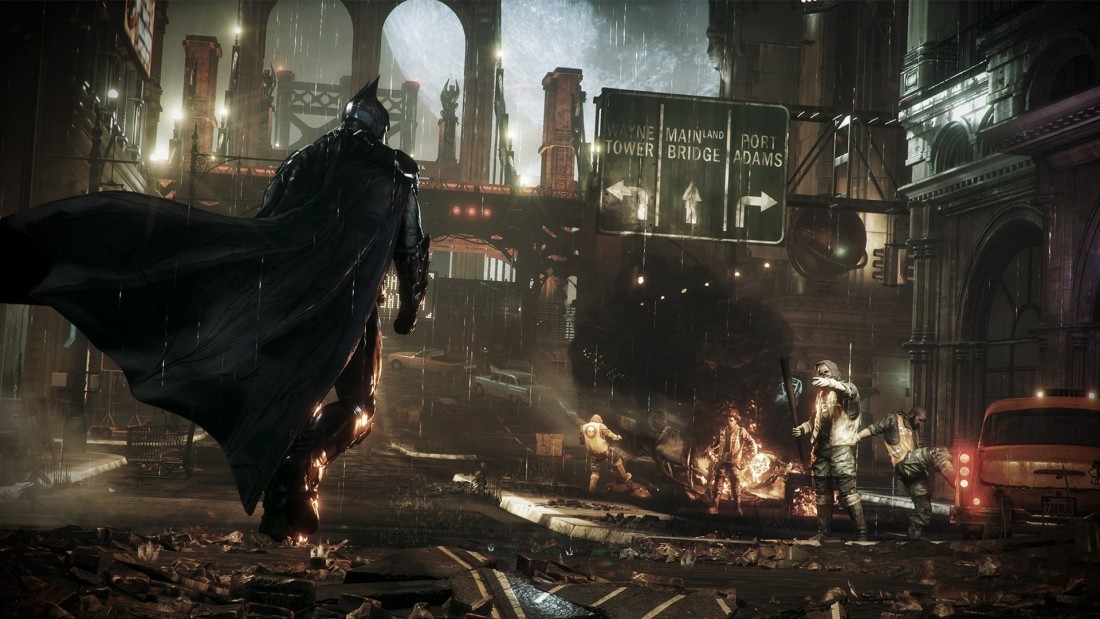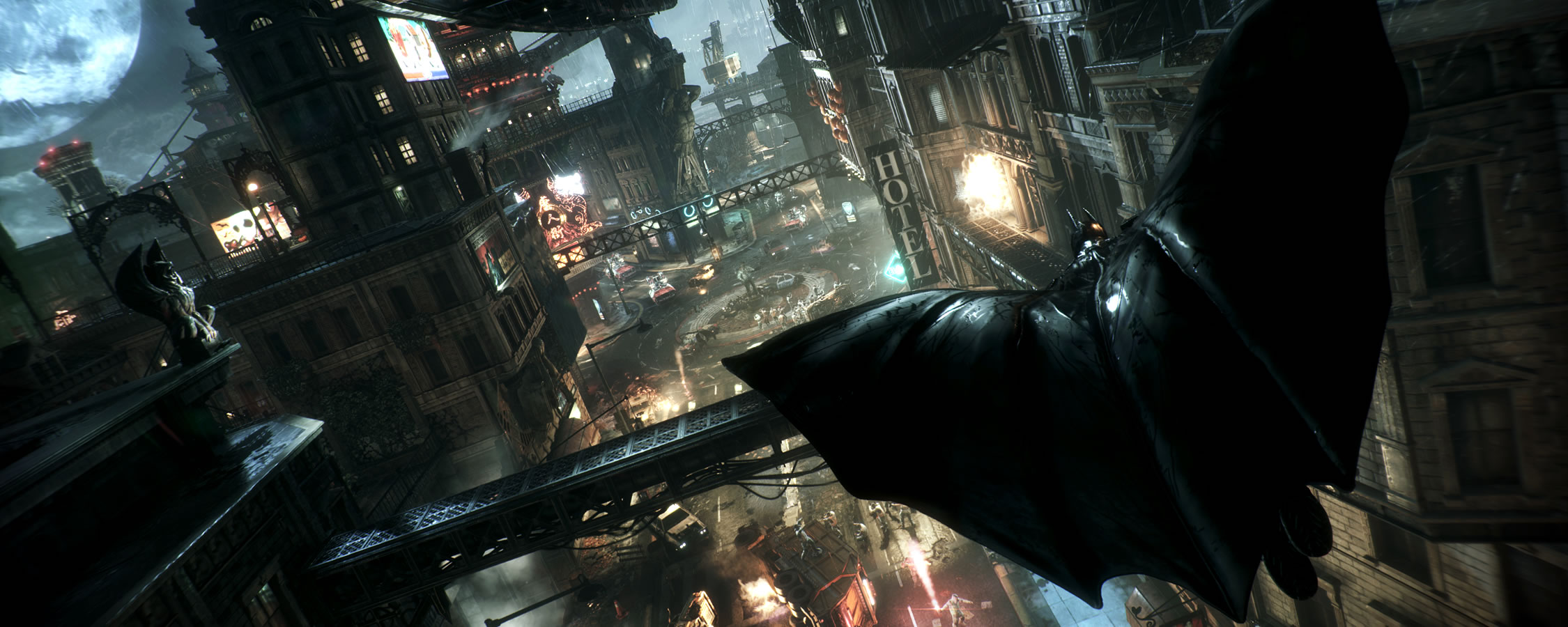Although I didn't spend much time playing Batman: Arkham Origins, I remember the game rather well after testing it on no less than 30 graphics cards and 20 CPUs. Arkham Origins appeared to take full advantage of Unreal Engine 3, it ran smoothly on affordable GPUs, though it's worth remembering that Origins was developed for last-gen consoles.
This week marked the arrival of Batman: Arkham Knight, the fourth entry in WB's Batman: Arkham series and a direct sequel to 2011's Arkham City (Arkham Origins was a prequel story-wise, however it was the third game installment).
Arkham Knight is also powered by Unreal Engine 3, but you can expect noticeably improved graphics, in part because the PlayStation 4 and Xbox One have replaced the PS3 and 360 as the lowest common denominator.

Leading up to launch, we had high expectations for the game's graphics after its recommended system specs were shared. As an Nvidia sponsored title, the specs failed to mention any AMD GPUs, but we were surprised to see the GeForce GTX 980 recommended for maximum quality graphics with the GTX 760 suggested for standard play.
Oddly, 3GB of VRAM was also called for even though most GTX 760 cards only sport 2GB, while the minimum specs demanded a GTX 660 with 2GB of VRAM.

Favoring one camp of GPUs is hardly the least contentious way to launch a new game, however it seems this release would have rattled cages regardless. Much of the PC gaming community has been angry about Arkham Knight's performance with reports of constant stuttering that ruins gameplay. The issue is mentioned by users of both Nvidia and AMD cards, though it seems AMD folks are having the most trouble.
AMD has responded quickly with a new beta Catalyst driver that resolves some of the issues. However for AMD the problem is that like other recent releases such as The Witcher 3 and Project CARS, Batman: Arkham Knight is laced with Nvidia's performance crushing GameWorks features including PhysX clothing and destruction on both PC and consoles. There are a few features that can only be enabled on Nvidia GPUs, such as interactive paper debris and interactive smoke/fog.
Some visual features like enhanced rain and enhanced light shafts can be enabled on all hardware, but overall the graphics menu is void of options. For instance, anti-aliasing can be turned on or off, with no mention of what AA mode is even used.

Enhanced rain means raindrops bounce off Batman's cape realistically as he jumps, flies, glides, grapples and dives through Gotham City. As helicopters fly overhead, volumetric lighting creates what developers call "god rays" that shine down from the search lights.
Between GameWorks, the limited video options, and general lack of optimization, Arkham Knight's performance paints an unusual picture. And it won't be a pretty one. At least we hope it doesn't run as poorly as Wild Hunt did with GameWorks enabled...
Editor's note on PC issues: As reported this week, Batman: Arkham Knight has showed severe performance issues on PC which prompted WB Games to halt sales of the game until the widespread technical issues are addressed. We've looked deep into the matter and have compiled a ton of testing in this performance review which should give a hint of what to expect today (Fraps testing) and when the game is fixed (built-in benchmark). For those of you interested about gameplay (the game itself is solid), check out this review.
Testing Methodology
Arkham Origins had a benchmark mode, but it was so crude we preferred to benchmark using Fraps. Arkham Knight's built-in benchmark seemed to work well enough that we initially opted to use it, making it easier for you to compare results. As you'll see however, we wound up including Fraps testing as well for a more complete look at the game's performance on today's hardware.
Benchmarking was conducted at 1080p, 1440p and 2160p (4K) resolutions using the highest quality settings available to us. Enhanced rain and enhanced light shafts were enabled, while we didn't test with interactive paper debris and interactive smoke/fog as they cannot be used with AMD graphics cards.
The game is locked at 30fps unless you modify a configuration file, which is among the top complaints by those playing on PC, signaling the issues that were to come.
Test System Specs
- Intel Core i7-5960X (3.00GHz)
- x4 4GB Kingston Predator DDR4-2400 (CAS 12-13-13-24)
- Asrock X99 Extreme6 (Intel X99)
- Silverstone Strider Series (700w)
- Crucial MX200 1TB (SATA 6Gb/s)
- HIS Radeon R9 390X (8192MB
- HIS Radeon R9 390 (8192MB)
- HIS Radeon R9 380 (4096MB)
- Gigabyte Radeon R9 290X (2048MB)
- Gigabyte Radeon R9 290 (4096MB)
- Gigabyte Radeon R9 285 (2048MB)
- Gigabyte Radeon R9 280X (3072MB)
- HIS Radeon R9 270X (2048MB)
- HIS Radeon HD 7970 GHz (3072MB)
- HIS Radeon HD 7970 (3072MB)
- HIS Radeon HD 7950 (3072MB)
- HIS Radeon HD 7870 (2048MB)
- Gainward GeForce GTX 980 Ti (6144MB)
- Gigabyte GeForce GTX 980 (4096MB)
- Gigabyte GeForce GTX 970 (3584+512MB)
- Gigabyte GeForce GTX 960 (2048MB)
- Nvidia GeForce GTX Titan (6144MB)
- Gigabyte GeForce GTX 780 Ti (3072MB)
- Gigabyte GeForce GTX 780 (3072MB)
- Gigabyte GeForce GTX 770 (2048MB)
- Palit GeForce GTX 760 (2048MB)
- Gainward GeForce GTX 680 (2048MB)
- Gainward GeForce GTX 660 Ti (2048MB)
- Microsoft Windows 8.1 Pro 64-bit
- Nvidia GeForce 353.30 WHQL
- AMD Catalyst 15.6 Beta
